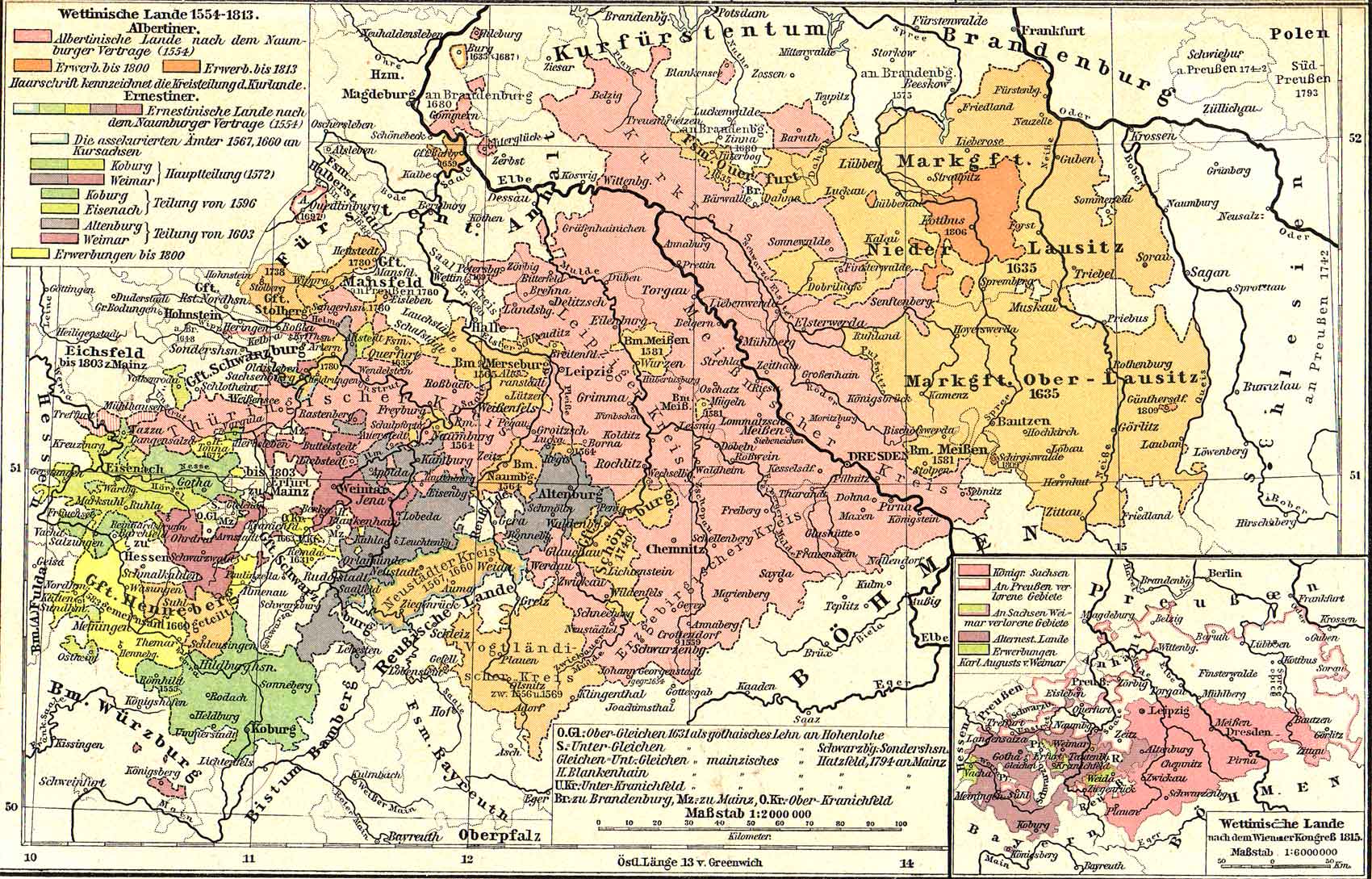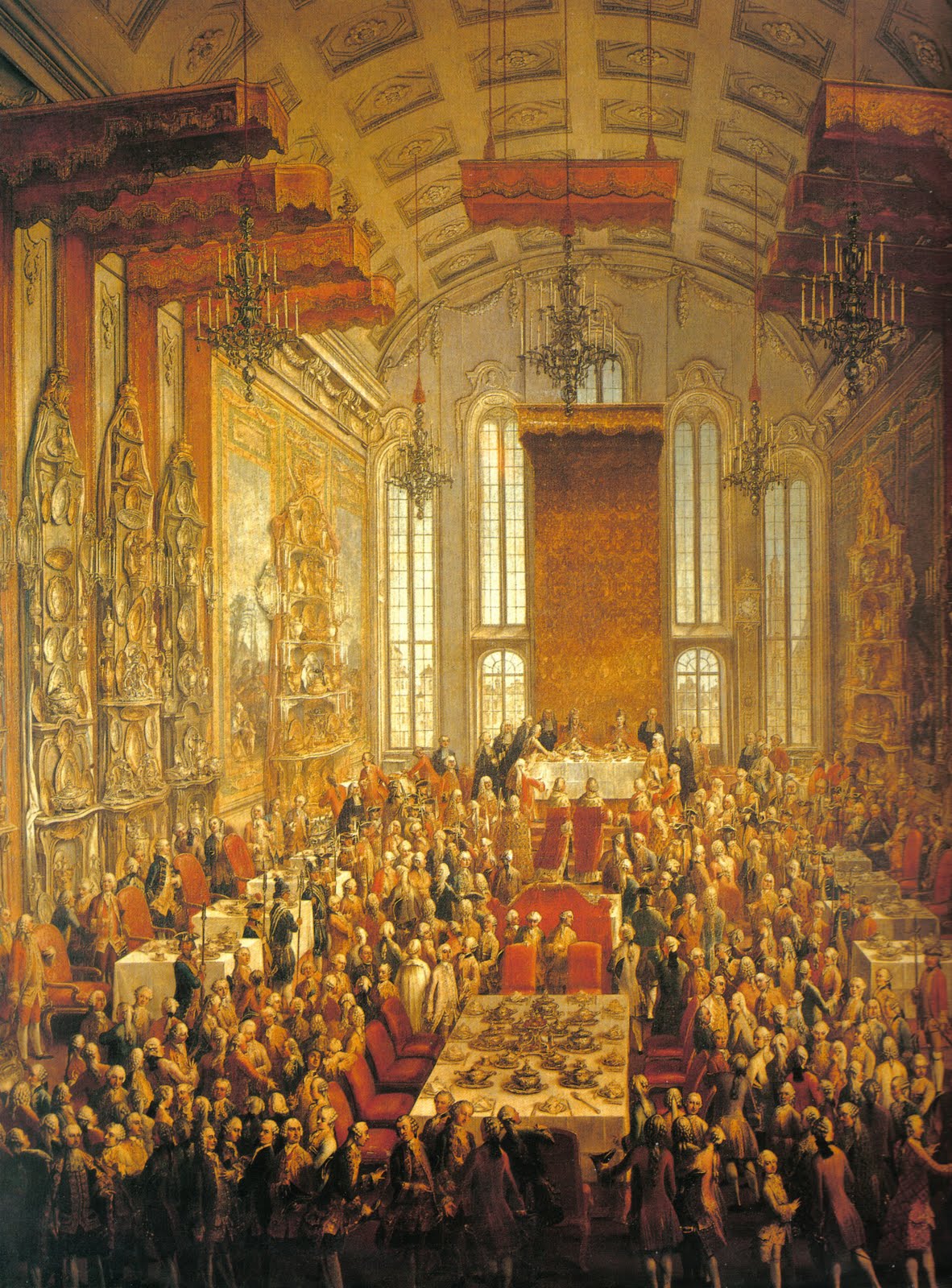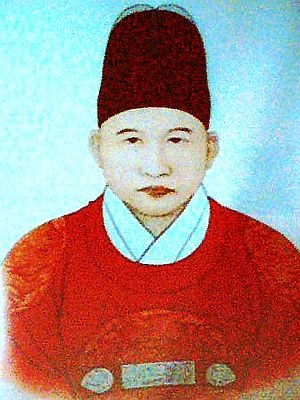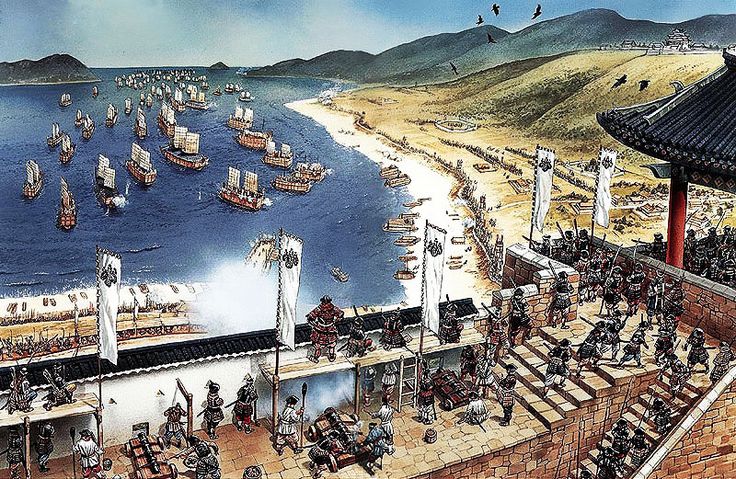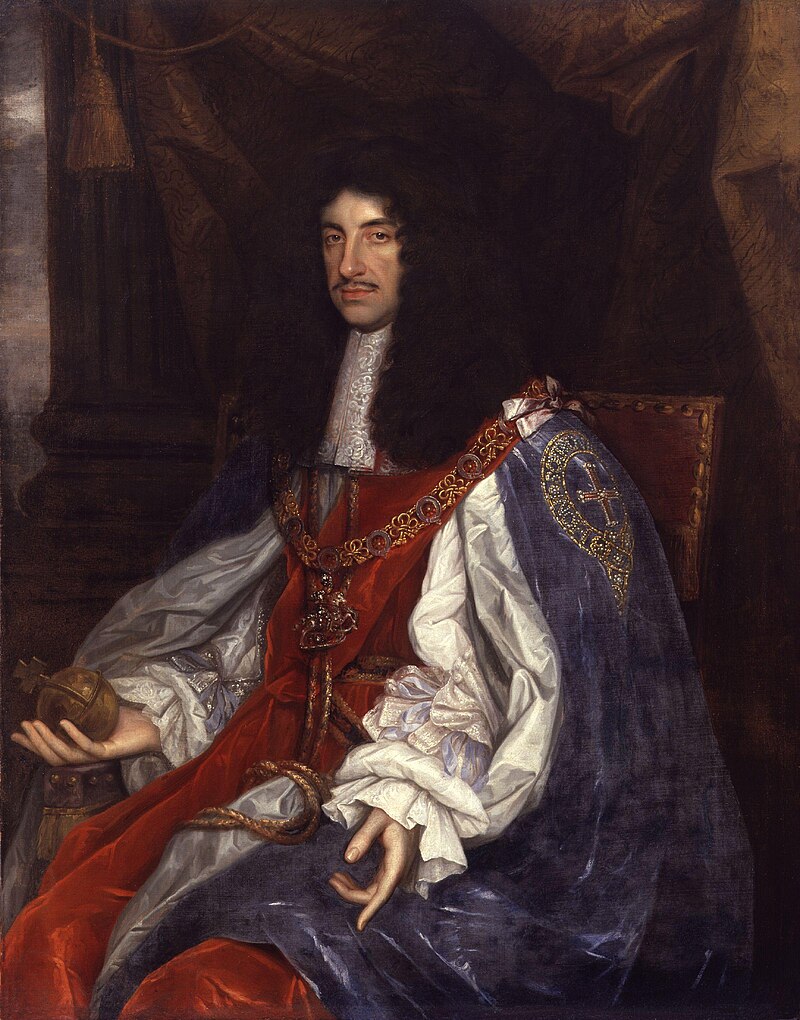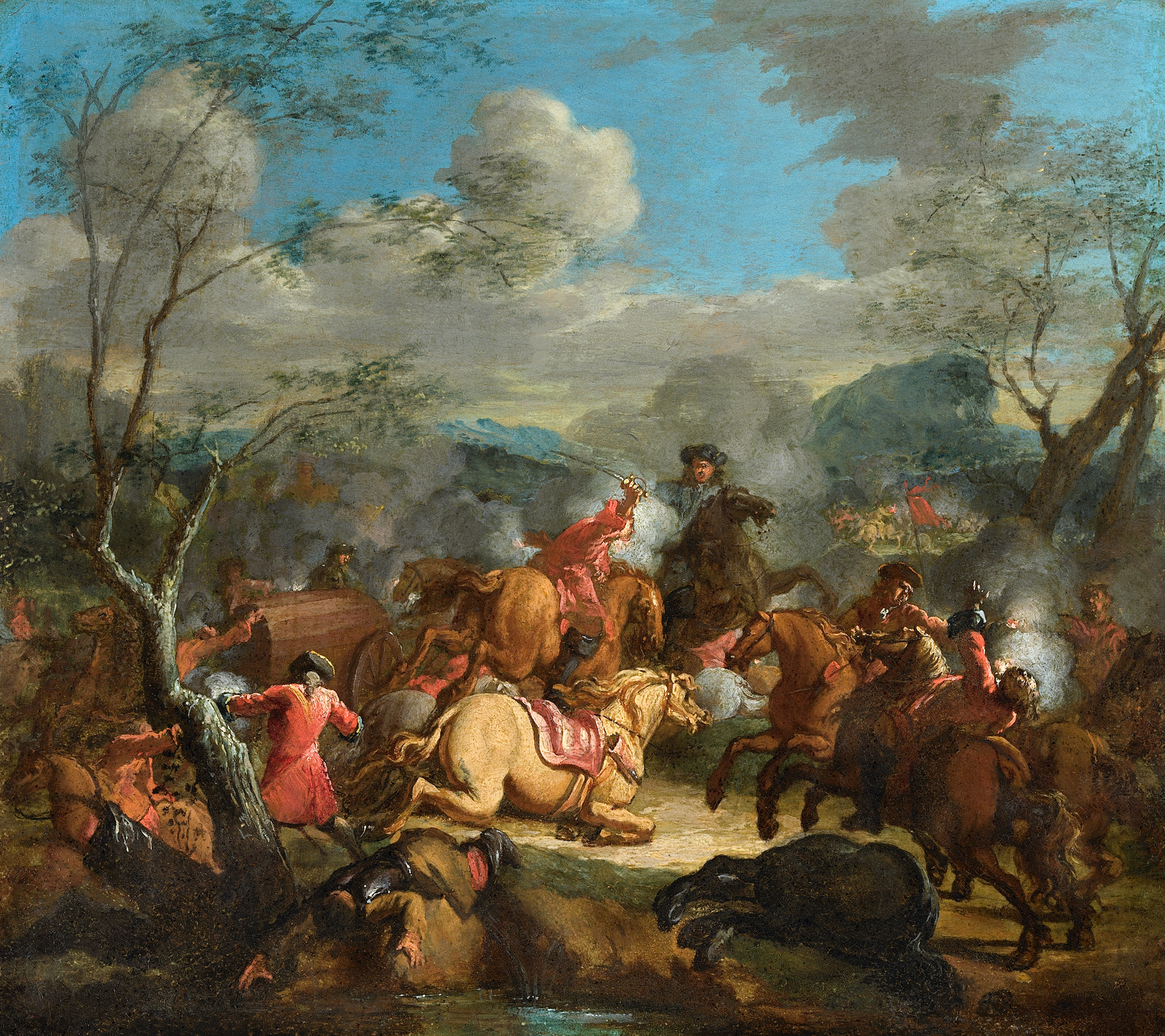After a bit of a hiatus, I stopped procrastinating and finished the post.
The End of The Peace - The Saxon War of Succession
The territories under control of the Saxon Crown.
Germany was, extremely surprisingly, at a relative peace for many, many years. In fact, there were a little under 10 separate wars since 1626, the end of the Great European War, as religion was no longer much of contention internally. Of course, though, this was not going to last. It was Germany, after all.
The von Wettin dynasty, and her cadets, proved to be a powerful one throughout the years, controlling many territories across Europe, including the crowns of Saxony, Poland, and Saxe-Coburg. Their dynasty went back all the way to the 10th century. They also, despite their proximity to their home region, had rather cordial relations to the Habsburgs. This meant that they often would join their wars and fall under their sphere of influence, and they remained content with that. This was until John George III. He was the elector of Saxony, and some said he was not sound of mind occasionally, although he seemed to be fit to rule.
However, as he entered his older years, it seemed that he began growing less aware of his surroundings. He would often march through the halls yelling random orders or obscenities. He also began to get a very serious eating problem, which, along with his mental ailment, made him appear to age far faster, and he appeared as if he was in his 90s when he became 50 years old in 1678.
The last king of Saxony of his line.
Another serious part of his rule was the fact that he refused to have children (making him one of the many leaders remembered throughout history for being homosexual or possibly asexual) but it would be no matter as his nephew was open to claiming the throne.
Despite this, he still retained power as rule, and he would excercise this on his deathbed. As John George was left dying, both deeply unwell mentally and physically, he would spell what could lead to the end of the Wettins. He designated his heir as Charles VI, heir apparent to the Holy Roman Empire and heir to the Archduchy of Austria. Coincidentally, his father would die of cardiac arrest a week later. This led to him claiming the Saxon throne shortly after his coronation in 1686. This was contested by Johann Adolf of Saxe-Weissenfels-Querfurt, a tiny duchy ruled by the Wettins. He claimed the throne, saying that his uncle was mad and did not truly wish to give the throne to the Habsburgs. He was soon backed by the Brandenburgers, with them not wishing to see an entire other kingdom absorbed by the Habsburg Empire. The states of the Holy Roman Empire would follow Austria into battle, causing a very one-sided war sparking, that is, until several more nations would join.
First, Venice would join, seeking to claim the title of the Kingdom of Croatia and adding it to their trading empire. Next, the Poland-Lithuanians would follow, led by their new vigourously anti-Austrian ruler, who desired to retake lost Polish territory, as well as take Transylvania if they were lucky. The big power that could offset the power balance was the Kingdom of France, led by Louis XIV, “The Sun King”. Louis and his advisors would spend several days debating on whether or not to join the war against Austria, however it was eventually decided that he should instead pursue an alliance with the Catholic power, and soon an envoy was sent asking the Habsburgs for some spoils from the war in exchange for mercenaries, all paid for by France to Austria.(This may seem ASB, but several deals during this time period between the French and Austrians appeared to be, in fact, very unlikely to a typical historian)
Salzburg would soon join Austria as well, due to being under their protection, and hours after joining, the first skirmish would occur. A Brandenburg-backed attack would begin in Bohemia, with a large regiment of cavalry with several infantry following would make their swift advance past the Sudetic mountain range and into the plains of northern Bohemia. This culminated in the First Battle of Reichenburg, between the enlarged Austrian garrison of Liberec, supported by 40,000 strong Holy Roman Guard(formerly the Army of the Holy Roman Empire, changed in 1622) would encounter the Brandenburger army, quickly taking them off guard. After sending in a mass of cavalry and disorganizing the opposing army, Imperial troops would smash into all flanks, pushing them against a steep hill, which led to a slaughter of all but some of the left regiments, who were able to get the message across that they wanted to surrender. The defeat was devastating for Brandenburg. Not only did it destroy much of their army, it also significantly diminished the morale of their troops that still remained.
The Battle of Reichenberg
However, the war was, of course, not just occurring in the north. Poland-Lithuania had also sent some troops of it’s own into Hungary, past the Carpathian mountains. In this case, they had sent a much larger army than the Brandenburgers, at 35,000 strong, full of infantry, and a good number of artillery, but somewhat lacking in cavalry-power. An early feat of intrigue caused the Austrians to think that they were to attack Moldavia, however the attack was, as stated, in eastern Slovakia, in places of the Carpathian range that were much easier to pass. They would lay siege to much of Slovakia, and take quite a few cities before getting deeper into Hungary. Austria responded by quickly sending the army of 27,000 in the east to the invading Poles, but found that the army was not enough, and once the battle began, it was clearly not in Austrian favor.
The battle ended conclusively in Poland’s favor, and they continued to push into the Carpathian mountains. Despite this, the Austrians were continuing to make gains in Brandenburg, and several regiments were planned to be removed from the German front and relocated.
Otto Ferdinand Graf, an Austrian Field Marshal, also was leading these armies. He and several generals and high-ranking officers would gather in Vienna to formulate a plan for the crushing of Poland, as they seemed to be a thorn in their side if they were going to try and take all of Saxony. So, they came to the conclusion that he would lead a large army directly from Saxony and march straight to Warsaw, where the claimant to Saxony was, and also where the Polish had their power center in. They would hopefully catch them off guard, and something this risky had never been tried before, so they were just hoping that they could make this as some sort of breakthrough. After all, they didn’t NEED Saxony, so it was a matter of luck, this war could finish by next year, December of 1690.
And so, their plans to relocate troops to the Carpathians were changed, and the armies there just went on the defensive, trying to stop them from making their way to Austria proper. This would be important later on, as they didn’t care much for protecting the Hungarians from getting their farms pillaged and set ablaze. They simply wanted to protect themselves from the Poles. The king of Poland-Lithuania, Jan III, had plans to push their way through Hungary, and hope that the Austrians would think of the war as futile, and surrender after they started helping Brandenburg as well.
Leopold’s Army, led by Otto Graf, would hold a huge army of Imperial and Austrian troops. It would begin it’s drive through in early spring, where he would send his armies reeling in the other direction, around through Krakow, and up the roads to Warsaw, after avoiding the fort near Krakow. The plan went surprisingly well, and they were very lucky not to get caught sooner. The huge army would reach the gates of Krakow by Summer, and they would soon lay siege to the city, not letting a single person leave the city. After several weeks of the slow slog of siege, their artillery would break through the walls, and the troops would flood in. In a cinematic scene, they fired shrapnel through the gates, one of the first recorded instances of it being used, although not neccisareily in warfare. The army, led by Otto, would operate similarly to the Russians in Czargrad, formerly Constantinople, and reach the Palace after fighting through the streets in brutal guerilla warfare. Similarly to what they had planned, the Poles were caught completely off-guard, and the armies had soon held both rulers hostage, in which they, as directed by the Emperor Leopold, would take them both under house arrest, demanding the immediate revoking of the crown from the Saxon claimant.
They also managed to negotiate the ceding of parts of Moldavia to the Habsburg Crown, and the entirety of Silesia under Bohemian claims. Johann Adolf would be taken by horse to Leipzig, where he would meet Emperor Leopold, cede the crown of Saxony to him, and have a large coronation ceremony, declaring “Elector Leopold I von Habsburg of Saxony” now the ruler.
Coronation of the new Saxon ruler
The war ended much sooner than planned, and the Leopold was gleeful at his new possession in Saxony. The Emperor now had another title in his domain, and the many powers around him feared. The Austrian Eagle now left it’s huge shadow over Europe, where things like feudalism and the social hierarchy were to be questioned, and a new book was starting to become popular in the defeated countries...
